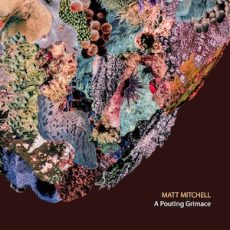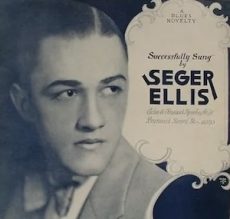
Daily Dose Of Jazz…
Matthew Mitchell was born July 19, 1975 and grew up in Exton, Pennsylvania. He first played the piano aged six, and composed from the age of 10. He had lessons in jazz and theory at a university from the age of twelve and at this stage he was influenced by pianists Keith Jarrett and Herbie Hancock.
He attended Indiana University for three years and then completed a master’s degree at the Eastman School of Music in the late Nineties before settlling in New York City. After holding down several jobs in the city Matt decided to move to Philadelphia, Pennsylvania where he worked in a library at The University of the Arts for nine years before leaving when he had too many gigs to fit in.
2011 saw him leading the sextet Central Chain, the following year he introduced a new trio with bassist Chris Tordini and Dan Weiss on drums. During this decade Mitchell was also part of Berne’s Snakeoil band, and John Hollenbeck’s Large Ensemble and Claudia Quintet. He joined and recorded with saxophonist Rudresh Mahanthappa’s band.
Mitchell was awarded a Pew Fellowships in the Arts in 2012. He has released fifteen albums as a leader or co-leader and recorded as a sideman on thirty albums.
Pianist and composer Matt Mitchell, who is a faculty member at New York’s Center for Improvisational Music, continues to expand his jazz catalogue through performance, composition and recordings.
More Posts: composer,educator,history,instrumental,jazz,music,piano

Daily Dose Of Jazz…
Ivor Mairants was born in Rypin, Poland on July 18, 1908 and moved with his family to the United Kingdom in 1913 where he attended Raine’s Foundation School in Bethnal Green. He began learning the banjo at the age of 17 and became a professional musician three years later.
In the 1930s he was a banjoist and guitarist for British dance bands led by Bert Firman, Ambrose, Roy Fox, Lew Stone, Geraldo, and Ted Heath. In 1950 Mairants established the Central School of Dance Music in London, England which he ran for 10 years. All instruments were taught at this establishment, but emphasis was given to guitar. Among the teaching staff at the school were Johnny Dankworth, Jack Brymer, Kenny Baker, Bert Weedon and Ike Isaacs, and Eric Gilder. In 1960 Mairants handed the school over to Gilder, who renamed it as the Eric Gilder School of Music.
In the Sixties and Seventies his guitar playing was often heard on television, radio, film soundtracks, and many recordings with the Mantovani orchestra and with Manuel and his Music of the Mountains. His 1976 recording of the Adagio from Joaquin Rodrigo’s Concierto de Aranjuez with Manuel sold over one million copies.
He wrote many occasional pieces for jazz bands, was a columnist for Melody Maker, BMG, and Classical Guitar, and was a member of the Worshipful Society of Musicians, a British guild, and a Freeman of the City of London. In 1997 the Worshipful Society inaugurated an annual competition for the Ivor Mairants Guitar Award.
Guitarist, composer and teacher Ivor Mairants, who with his wife Lily in 1958 he created the Ivor Mairants Musicentre, a specialist guitar store in London, died on February 20, 1998.
More Posts: composer,educator,guitar,history,instrumental,jazz,music

Daily Dose Of Jazz…
Erik Parker was born July 13, 1918 in Århus, Denmark. By 1938 he became a member of the Svend Asmussen Orchestra and from 1939 to 1945 was involved in Leo Mathisen’s Orchestra, where he performed both as an instrumentalist and a vocalist.
He worked as a club manager, and from 1945-1951 he was an actor. In 1953 he emigrated to the United States, where he settled in Los Angeles, California where he became a restaurateur and trumpet teacher.
Throughout his career he was a member of the All Danish Starband, Henry Hagemann & His Full Brass, Henry Hagemann’s Sextet, Kai Ewans And His Swinging 16, Leo Mathisens Band, Leo Mathisens Orkester, Leo Mathisens Ønskeorkester, and Roger Henrichsen Trio.
Trumpeter and vocalist Erik Parker, who is considered one of the most significant Danish jazz musicians and a distinguished representative of golden age jazz, died in 2003.

Daily Dose Of Jazz…
Sara Jacovino was born on July 9, 1983 and earned both a Bahelors and Masters degree in music from the University of North Texas. While there she studied composition with Neil Slater and Paris Rutherford and trombone with Steve Wiest and Tony Baker.
Since leaving Texas for New York City, she has entrenched herself in the jazz scene as a trombonist, composer, and arranger. who has drawn the recognition of many of her peers nationwide. She has received awards from the BMI Foundation, Downbeat Magazine, the Airmen of Note, The International Trombone Association and among others.
Sara leads her own quartet and is a member of The Birdland Big Band, The Diva Jazz Orchestra, David Berger and the Sultans of Swing, Band of Bones, The Manhattan Bridges Orchestra, and The Afro-Bop Alliance. She is an active musician in the Broadway scene performing in numerous musical productions and currently holds the tenor/bass trombone chair in “Tina, The Tina Turner Musical” at the Lunt-Fontanne Theatre.
A sought after session musician as both a lead/section trombonist and soloist. Her writing and playing is often featured by the Birdland Big Band, The Diva Jazz Orchestra, and can be heard on numerous albums by the University of North Texas One O’Clock Lab Band including: “Lab 2008,” “Lab 2007,” “Lab 2006” and “Live at Blues Alley, and by the award winning UTubes Jazz ensemble.
She enjoys working as a guest artist and clinician for University and High school jazz programs. Sara will be a guest performer and clinician at both the International Trombone Festival in 2021 and IWBC Festival in 2022.
Trombonist Sara Jacovino continues to perform, compose, arrange and continues to accept commissioned works.
More Posts: arranger,bandleader,composer,history,instrumental,jazz,music,trombone

Daily Dose Of Jazz…
Seger Pillot Ellis was born on July 4, 1904 in Houston, Texas and began his career as pianist playing live for a local Houston radio station in the early 1920s. In 1925, he was added to the orchestra of Lloyd Finlay for a recording session for Victor Records, and was also allowed to cut two piano solos. This led to Ellis being invited to Victor’s regular recording studio in Camden, New Jersey, to cut a number of piano solos, all or most of them compositions of his own. These were among the earliest records Victor made using the new electric microphone and recording equipment.
After his first recording experiences, Ellis returned to Houston and radio work as well as playing in vaudeville theaters. During this period Seger began adding singing to his piano playingwhich led to an invitation to New York City to make vocal test recordings. His first issued vocal record was “Sunday” on the Columbia label, then a string of records for Okeh Records.
Ellis selected many of the best jazz musicians of the time, including Tommy and Jimmy Dorsey, Joe Venuti, Eddie Lang, Andy Sannella and Louis Armstrong. His first recording career ended in 1931, however, in the late Thirties he returned to conducting and singing with his own big band, Choirs of Brass Orchestra. Later in his career, he focused more on songwriting, but recorded sporadically as well as playing the piano.
In 1939, Ellis reorganized and his new band featured the conventional four-man reed section. He disbanded in 1941, and was enlisted in the United States Army Air Forces in 1942. After his discharge he moved back to Texas and began to be less active as a performer and more a songwriter and composer. His compositions were recorded by Harry James, Gene Krupa, Bing Crosby, Count Basie with a Mills Brothers vocal.
Pianist and vocalist Seger Ellis, who made a few brief film appearances in collaboration with director Ida Lupino, died on September 29, 1995 in a Houston retirement home.
Acquaint an inquisitive mind with a dose of a Houston pianist who is in the company of musical genius around the world as a member of the jazz canon…
Seger Ellis: 1904~1995 | Piano, Vocal
More Posts: bandleader,history,instrumental,jazz,music,piano,vocal


